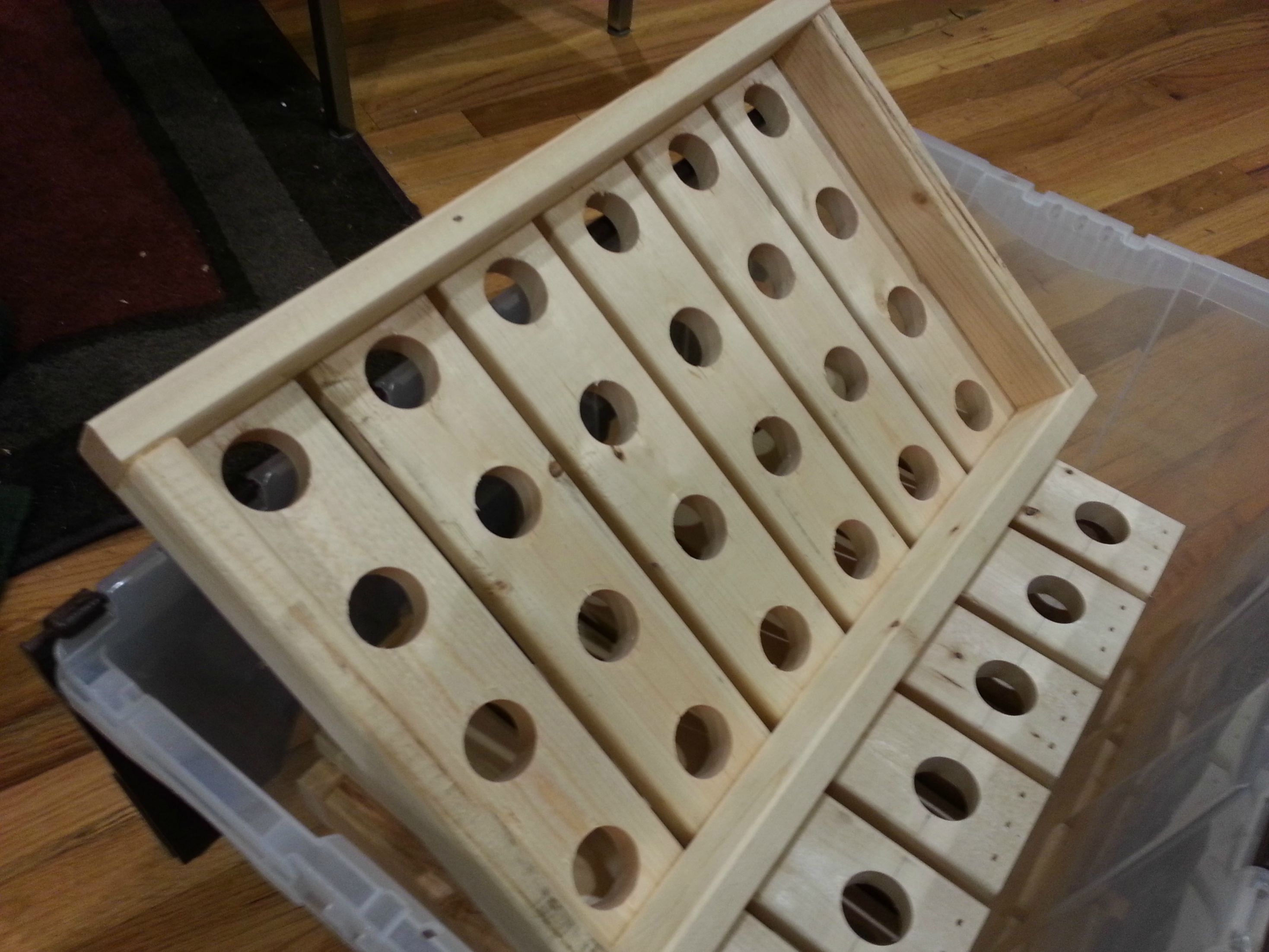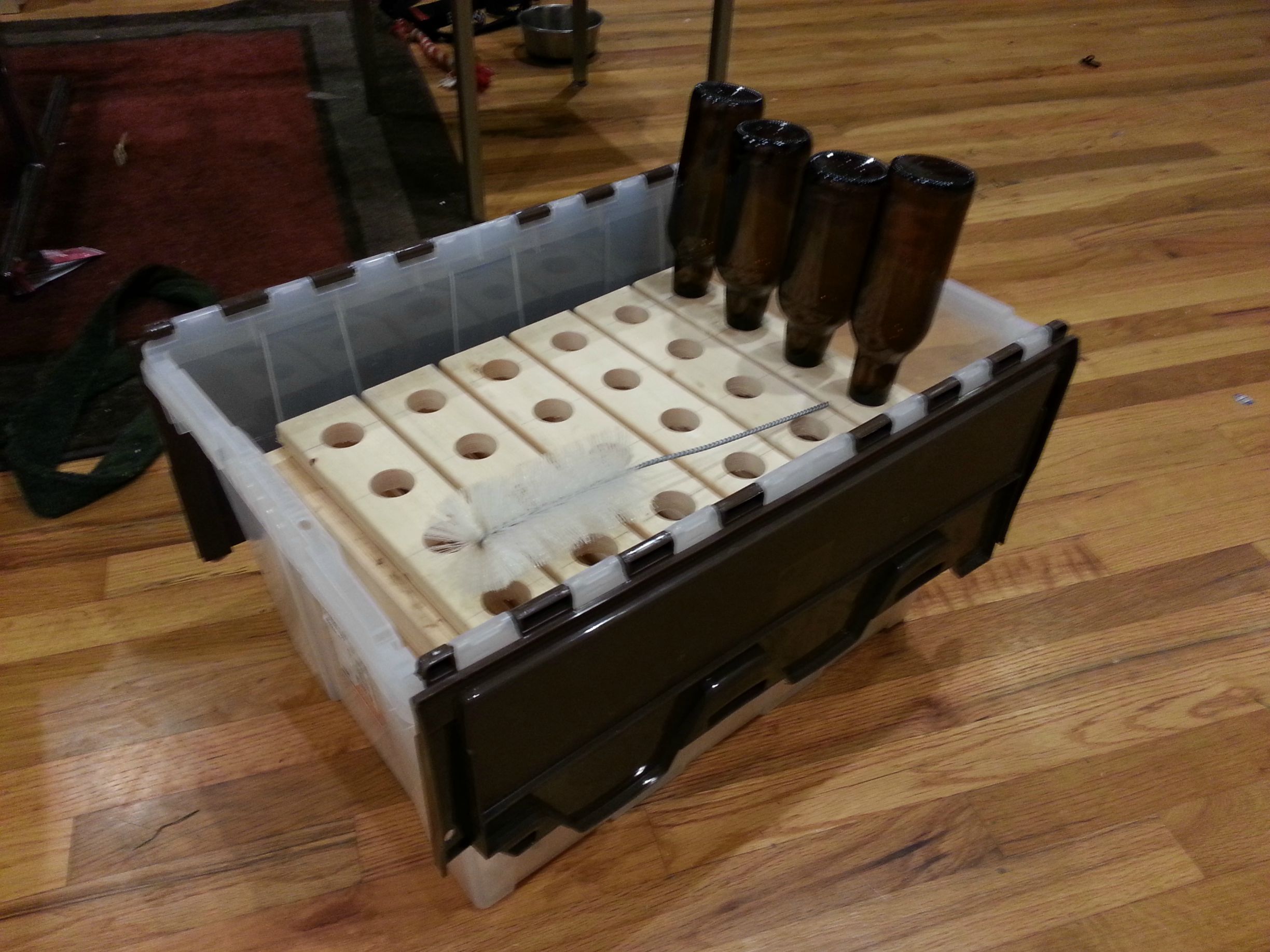homebrewdad
Well-Known Member
Sounds like the myth that you need to sterilize bottles with heat has reared its ugly head.
I don't think anybody has said that heat is required. Some people simply prefer to do it this way.

Sounds like the myth that you need to sterilize bottles with heat has reared its ugly head.


I do it all the time; shove a racking cane into my picnic tap, fill a couple 2l. soda bottles before the keg kicks. Have drank them 2 months later, still fully carbed.Best thing about bottling is taking it with you, and having lots of variety! I'm on
Vacation in vermont this week, and brought 2 cases comprising 10 different kinds! Do that with a keg!

![Craft A Brew - Safale S-04 Dry Yeast - Fermentis - English Ale Dry Yeast - For English and American Ales and Hard Apple Ciders - Ingredients for Home Brewing - Beer Making Supplies - [1 Pack]](https://m.media-amazon.com/images/I/41fVGNh6JfL._SL500_.jpg)













I've done the "dunk a bottle" thing. I stand by my assertion - bottle tree + vinator saves me a solid hour of bottling labor.
I do it all the time; shove a racking cane into my picnic tap, fill a couple 2l. soda bottles before the keg kicks. Have drank them 2 months later, still fully carbed.
It takes you over an hour to dunk 48 bottles?
Uhhhhh...
Homebrewing myths:
1. Kegging is superior to bottling and/or kegging makes better beer
2. bottling beer is overly time consuming (you are doing it wrong)
3. If your yeast pitching rate isn't perfect you can forget about making good beer! You need to get a digital microscope and start yeast counting!
4. Don't use dish soap to clean your brewing equipment or you'll get off flavors! (Never once has dishsoap given me an off flavor in almost 2 years of brewing...it's called RINSING WELL. If dishsoap contributed off flavors your food would all taste off now wouldn't it?).

Myth: Commercial screw-tops are unsuitable bottles for homebrew. The bottles are literally exactly the same: the same glass, the same factory, the same shipping, the same everything. The most important part, the sealing surface between bottle and crown, is identical.
Rundownhouse said:Myth: Commercial screw-tops are unsuitable bottles for homebrew. The bottles are literally exactly the same: the same glass, the same factory, the same shipping, the same everything. The most important part, the sealing surface between bottle and crown, is identical.
Myth: Commercial screw-tops are unsuitable bottles for homebrew. The bottles are literally exactly the same: the same glass, the same factory, the same shipping, the same everything. The most important part, the sealing surface between bottle and crown, is identical.
[...]
the problem there isn't with the bottle, it's with whatever piece of **** the homebrewer bought to crown the bottles. The caps are the same, the sealing surface is the same, the quality of the glass is the same, the bottle mold is the same, etc etc.
Different neck finish and bead, different mold, sealing surface not identical. Whether it suits you is a matter of personal standards.
Uhm, if you're trying to say that pry-off capped bottles and twist-off capped bottles are identical, that's clearly not true. Just look at them. Pry-off bottles are smooth all around the top, whereas twist-off bottles clearly have threads molded into the glass.
If that's not what you were saying then I apologize, but you seem pretty adamant that the bottles are identical in every way, which is just not true.
Where the bottle cap meets the bottle - the sealing surface - they're the same. Obviously one has threads and the other doesn't, but that doesn't matter for the seal. Homebrew caps, almost all of them, have a liner specifically designed to seal against either twists or pry-offs. The seal is the only part that really matters, after all. I use a red baron wing capper and it works just fine. Homebrewers that claim their capper won't work I chalk up to them having something funky or not knowing what they're doing; I think the red wing capper is pretty ubiquitous, so if it works, everyone should be able to get it to work.
I've used twists from factories in Waco, LA, and Ontario, and they're all just fine.
Does everyone think when a brewery changes from using twists to pry-offs, or the other way around, they have to retrofit their equipment? Or if they have one brand in a twist and one in a pry, they have to have two separate packaging lines? Or that there's some pro magic that makes them able to crown a bottle properly where homebrewers can't?
I'd venture that breweries DON'T switch back and forth between twist offs and pry offs. Most pro bottling lines for craft beer are pry off only.
I'd venture that breweries DON'T switch back and forth between twist offs and pry offs. Most pro bottling lines for craft beer are pry off only.
In fairness, the sealing surface is similar, but not identical. You will find twist off bottles thinner and flatter at the top of the neck finish, whereas pry off bottles are wider and rounded to allow for the cap to be properly crimped around it. This worked for a friend of mine, until he tried to ship me a bottle. DFH on Brewmasters is another great example; they made the right call with consideration for shipping/storage conditions.
If the myth were revised to "twist off bottles can never be used with pry off caps, regardless of shipping/storage conditions," I could hop on board. But literally, identically the same? No...
I use secondary on just about every beer. I get lots of people on here who preach that it's useless. I feel it's worthwhile.
I'd venture that breweries DON'T switch back and forth between twist offs and pry offs. Most pro bottling lines for craft beer are pry off only.
YesDo you think they bought a new packaging line too?